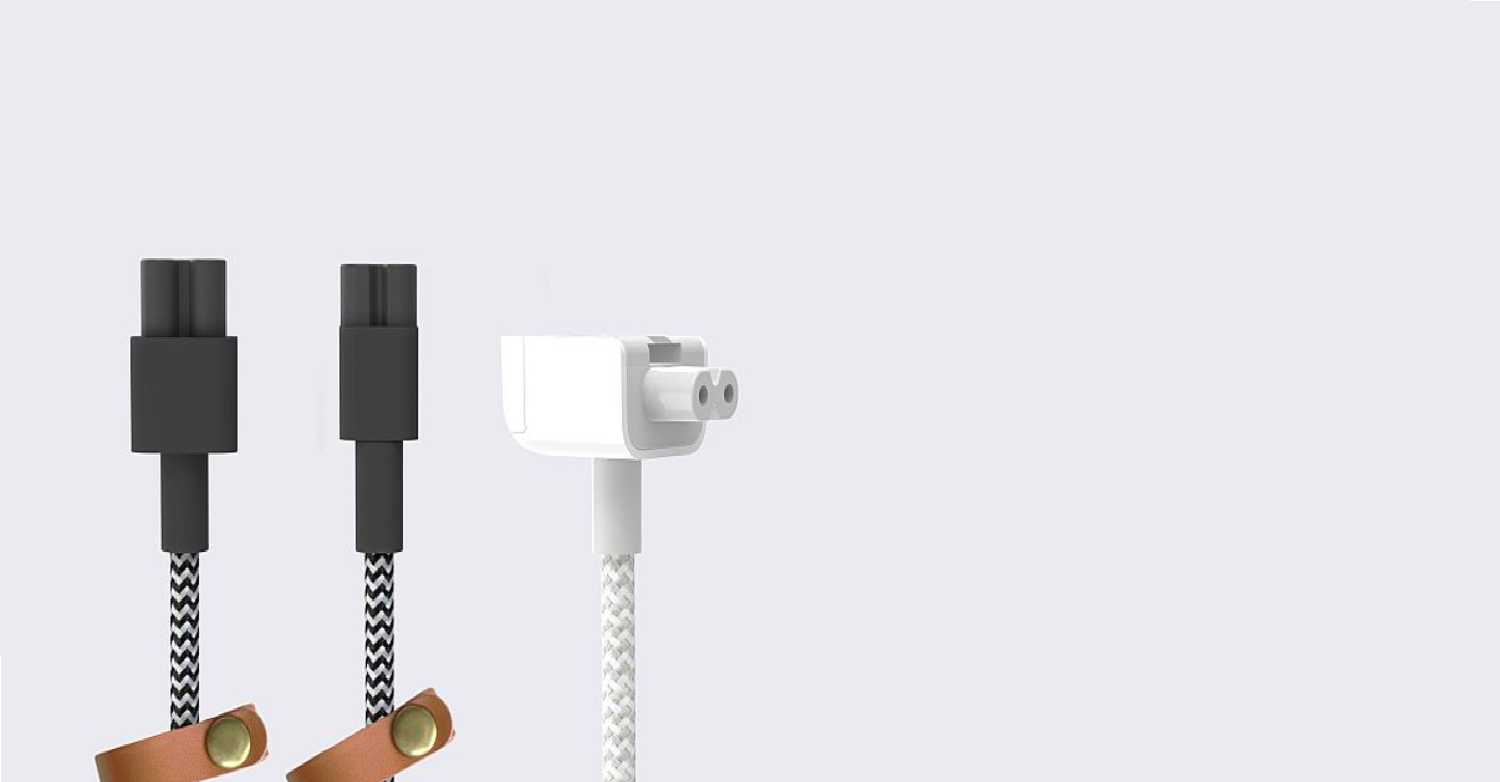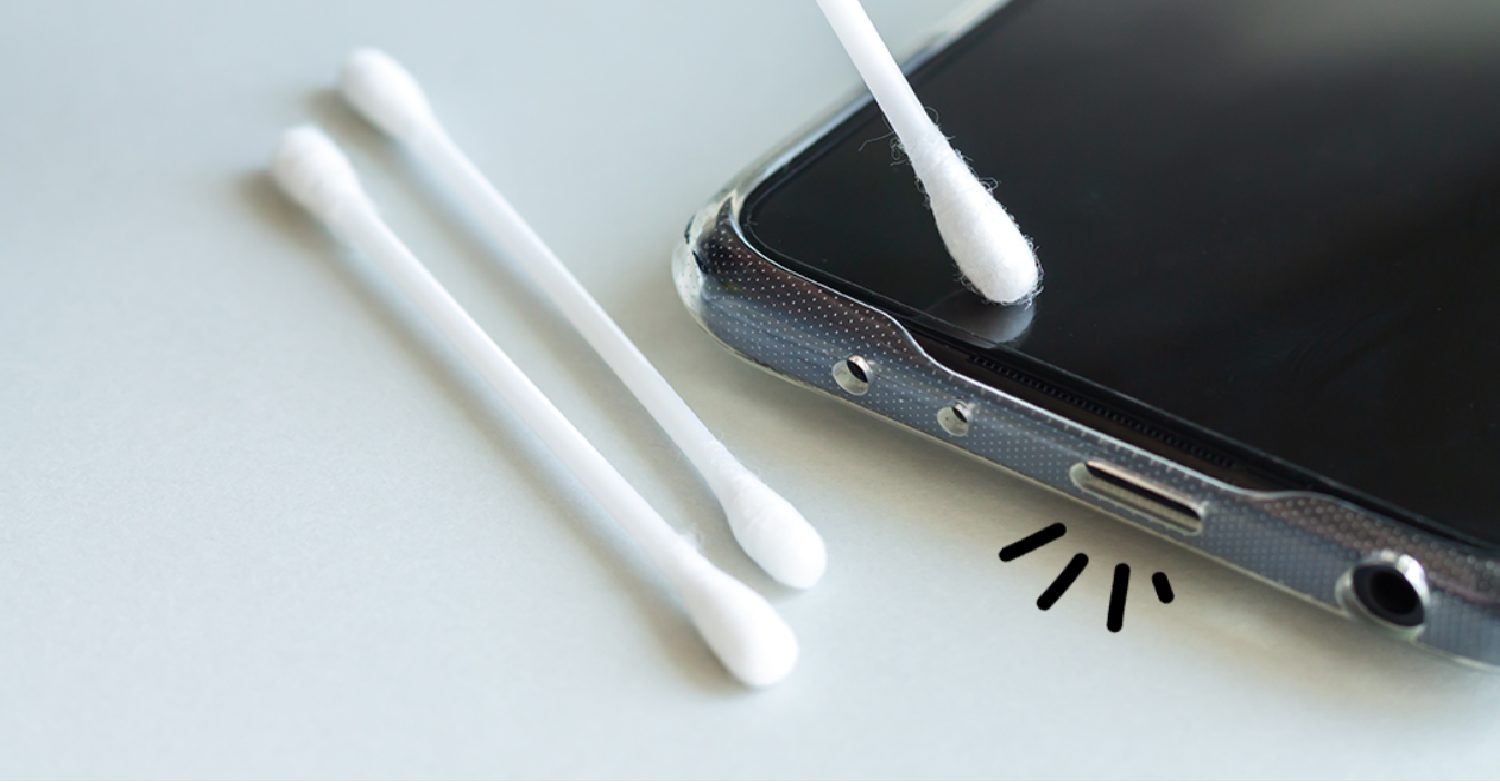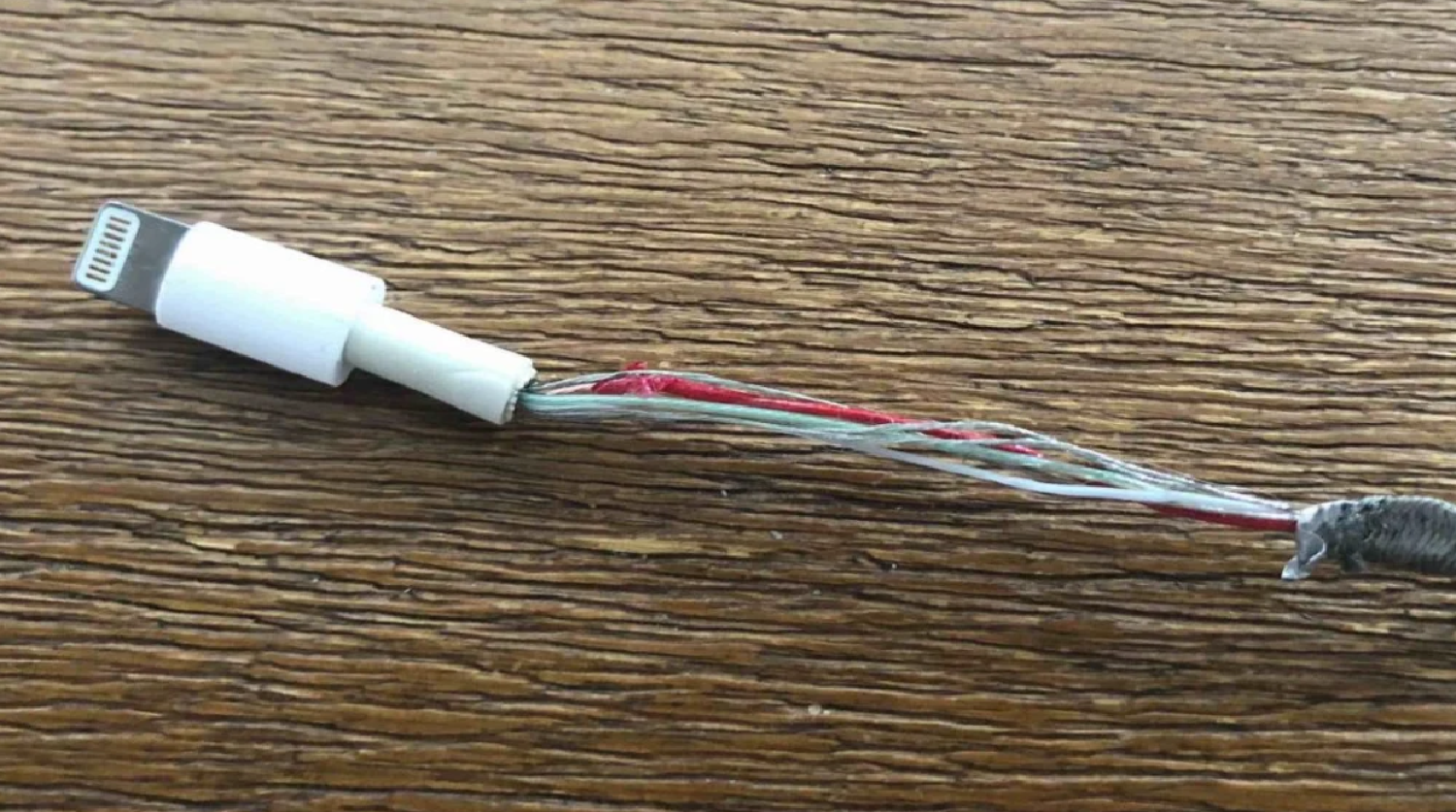Ever found yourself staring at your iPhone charger, wondering why it looks like it’s been through a mini battle? You’re not alone. Every day, countless iPhone users discover mysterious cracks on their chargers, leading to a whirlwind of questions and, let’s be honest, a pinch of frustration. Why do iPhone chargers crack? Read to know in the article below.
iPhone chargers often crack due to repeated bending, flexing, and physical strain near the connectors. Over time, this stress compromises the cable’s integrity. Additionally, dirt and debris can weaken the connection, leading to overheating, which further exacerbates the cracking issue.
But what if I told you that understanding this enigma isn’t as complex as cracking the Da Vinci Code? Buckle up, because we’re about to dive deep into the world of iPhone chargers and unravel this perplexing puzzle! Why do iPhone chargers crack? Keep Reading!
See Also: How Much Does Apple Charge To Unlock A Disabled iPhone?
Contents
- 1 The Anatomy Of An iPhone Charger
- 2 Common Reasons For Charger Cracks
- 3 The Domino Effect: How One Damaged Charger Can Lead To More
- 4 Preventive Measures And Care Tips
- 5 When To Replace Your Charger?
- 6 FAQs
- 6.1 Why is there a crack on my Apple charger?
- 6.2 Is a crack in the charger's plastic wrapper a problem?
- 6.3 What causes the small crack in the part of the Apple charger that goes into the phone?
- 6.4 Why does my Apple charger have a crack near the connector?
- 6.5 Is it safe to use a cracked Apple charger?
- 7 Conclusion
The Anatomy Of An iPhone Charger
Let’s kick things off with a mini anatomy lesson. Think of your iPhone charger as a mini highway, bustling with tiny electronic cars (currents) zooming from one end to the other. This highway is made up of four individual lanes (wires), each with its own purpose and direction. Now, these lanes are protected by a layer of insulation to ensure our tiny cars don’t crash into each other.
Connecting this highway to our devices is the USB junction—a complex intersection with four pins. Each wire, or lane, is securely attached to its designated pin, ensuring a smooth flow of traffic.
Common Reasons For Charger Cracks
Ah, the age-old question: “Why do iPhone chargers crack? ” Many of us have pondered this as we inspect our beloved iPhone chargers that seem to sport cracks like they’re the latest fashion trend. But this leads to another burning question: “Why are Apple chargers so bad?” While it might seem like they’re prone to damage, it’s often a combination of daily wear and tear, user habits, and external factors that lead to their deterioration. Let’s dive into the nitty-gritty of this perplexing phenomenon.
- Daily Wear And Tear: Just like your favorite pair of jeans that fray over time, chargers aren’t immune to the effects of daily use. Every bend, twist, and pull can weaken the outer insulation, making it susceptible to cracks.
- Sharp Bends: Ever hastily stuffed your charger into a bag or pocket? These sharp bends can cause significant stress, especially near the connectors. Over time, this stress can lead to visible iPhone charger cracked.
- Temperature Fluctuations: Exposing the charger to extreme temperatures, like leaving it in a car on a scorching day or near a heater, can compromise its integrity. Expand and contract, and this movement can lead to cracks.
- Dirt And Debris: Tiny particles can sneak their way into the charging port. When you plug in the charger, these particles can cause micro-abrasions on the cable, weakening it over time.
- Overstretching: Stretching the charger to its maximum length to reach that far-off outlet? This overextension can strain the internal wires, leading to external cracks.
- Manufacturing Defects: Sometimes, it’s not you; it’s the charger and cheap iPhone chargers in store. Manufacturing inconsistencies can make certain chargers more prone to cracking.
See Also: [Solved] A Problem Has Been Detected And Windows Has Shut Down To Prevent Damage To Your Computer
The Domino Effect: How One Damaged Charger Can Lead To More
Picture this: a single domino toppling over, setting off a chain reaction that sends an entire lineup crashing down. Now, replace those dominos with tech gadgets, and you’ve got a pretty accurate representation of how one damaged charger can wreak havoc on multiple devices. Why do my iPhone chargers keep breaking? This “apple charger cracking” phenomenon isn’t just about one faulty cable; it can have ripple effects on your entire tech ecosystem. Intrigued? Let’s break it down.
- Transfer Of Debris: A damaged charger can accumulate dirt and debris. When plugged into another device, it can transfer these particles, leading to potential connectivity issues or even damage to the device’s charging port.
- Electrical Short Circuits: A cracked charger might have exposed wires. These can cause short circuits, which not only damage the charger further but can also harm any device it’s connected to.
- Overheating Issues: Damaged chargers can overheat more easily. When connected to a device, this excess heat can affect the device’s battery life or even its internal components.
- Spread Of Micro-damage: Think of it as a tech virus. A charger with micro-damage can cause minor issues in a device’s port. When a different, healthy charger is later plugged into this affected device, it too can get “infected” with damage.
- Reduced Charging Efficiency: A iPhone chargers crack might not deliver power efficiently. Devices connected to it might charge slower, and over time, their battery calibration can get affected.
In the interconnected world of our gadgets, the health of one can impact the well-being of many. It’s a domino effect that underscores the importance of timely charger replacements and regular device maintenance. After all, prevention is better than cure, especially in the tech world!
Preventive Measures And Care Tips
Alright, tech enthusiasts, it’s time to put on our protective gear and shield our chargers from the perils of everyday life! If you’re tired of seeing your iPhone charger crack and frays, these preventive measures and care tips are your new best friends.
- Gentle Handling: Always unplug by holding the hard connector, not by yanking the cable. It’s like holding a bird: gently, without squeezing its wings.
- Avoid Sharp Bends: When storing, roll the cable in a loose coil rather than folding it sharply. Hence, this reduces stress on the cable, especially near the connectors.
- Temperature Control: Keep your charger away from extreme temperatures. That means not leaving it in a hot car or near a direct heat source.
- Cleaning: Use a cloth or a cotton swab to gently clean the connectors. Hence, this removes dirt and debris, ensuring a smooth connection.
- Protective Cases: Consider using protective cases or spring reinforcements near the connectors. These can provide added support and reduce wear and tear.
- Avoid Overstretching: If your charger barely reaches the outlet, consider getting an extension cord. Stretching your charger to its limit can strain the internal wires.
- Quality Over Price: Invest in good quality chargers. They might be pricier, but they’re often more durable and less prone to iPhone chargers crack.
Remember, chargers might seem like simple accessories, but they’re the lifeline for our devices. A little care goes a long way in ensuring they stay in proper shape, ready to power up our tech arsenal whenever needed!
See Also: How To Adjust HDMI Screen Size on TV Windows 10?
When To Replace Your Charger?
So, when is it time to bid adieu to your trusty charger? Why do iPhone chargers crack? While they’re designed for durability, their lifespan can vary based on usage and care. If your charger is showing signs of wear, iPhone chargers crack, like visible wire or consistent connectivity issues, it might be nearing its end. Remember, chargers are replaceable, but the data and device they connect to? Priceless.
- Visible Wires: If you can see the internal wires peeking out, it’s a clear sign. Hence, exposed wires can be a safety hazard and can lead to short circuits.
- Inconsistent Charging: If your device charges intermittently or you need to wiggle the cable to get it to work, it’s time for a change.
- Overheating: A little warmth is normal, but if your charger gets too hot to touch, it’s a red flag.
- Physical Damage: Noticeable cracks, deep bends, or any form of physical damage can affect the charger’s performance.
- Age: If your charger has been with you through thick and thin for several years, it might be nearing its end.
In the tech world, it’s always safety first. While it might be tempting to squeeze a few more days out of a damaged cracked charger, it’s not worth the risk. After all, a reliable charger ensures your device stays powered up and ready for action!
FAQs
Why is there a crack on my Apple charger?
Sounds like there's some physical damage to your Lightning cable. Frequent bending, flexing, and improper unplugging can lead to wear and tear, resulting in cracks.
Is a crack in the charger's plastic wrapper a problem?
While a mere crack in the plastic wrapper might not immediately cause issues, underlying cable damage can compromise the charger's functionality and safety.
What causes the small crack in the part of the Apple charger that goes into the phone?
The crack in the wire is often due to the extreme bending and flexing it undergoes, especially when it comes straight out of the bottom.
Why does my Apple charger have a crack near the connector?
The area near the connector experiences the most stress due to bending and plugging/unplugging. Over time, this stress can lead to damage in the outer insulation, exposing the internal wires.
Is it safe to use a cracked Apple charger?
Using a cracked charger can be risky. Exposed wires increase the chances of short circuits, which can damage your device or even pose a fire hazard. It's best to replace a cracked charger to ensure safety.
Conclusion
Navigating the world of iPhone chargers might seem like a walk in a tech park, but we can turn it into a delightful journey with a sprinkle of knowledge and a dash of care. Why do iPhone chargers crack? Chargers, like all things, have a lifespan. But with the right preventive measures, gentle handling, and timely replacements, we can extend their life, ensuring our devices are always juiced up and ready to go.
Remember, in the grand tapestry of our digital lives, a charger plays a pivotal role, acting as the bridge between our devices and their power source. So, let’s give them the care they deserve, ensuring fewer cracks and more efficient charging sessions. Here’s to a future with robust chargers, full batteries, and zero interruptions!
See Also: Amazon Fire TV Stick Is Not Booting? Troubleshoot & Fix It Quickly

Marshall is a professional writer with a degree in Business and Fine Arts. He is a hardcore tech geek and gamer at heart. Marshall, an API/Software Technical Writer, is currently based in Tokyo, Japan. When he’s not working, he spends most of his free time building VGKAMI and ITEnterpriser, tinkering with his RAID calculator, learning Japanese, or hiking the mountains of Japan.





